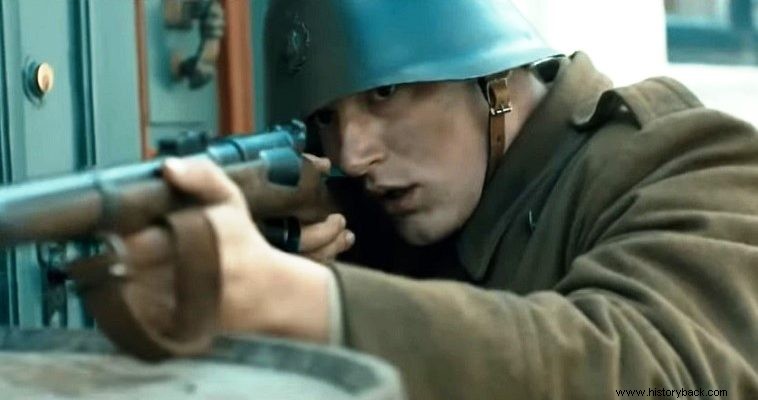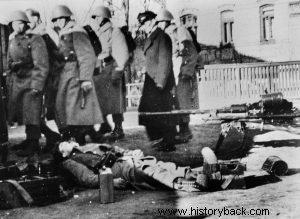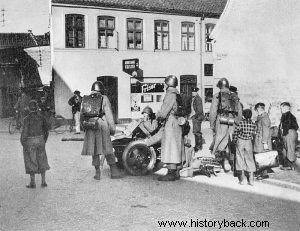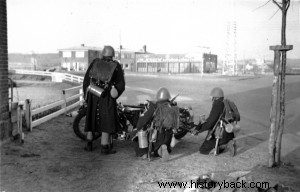
Many accuse the Danes of surrendering without a fight to the Germans when they invaded their country on April 9, 1940. This is not true. The country's tiny army fought as long as its government and circumstances allowed.
The country's left-wing government, not wanting to "provoke" the Germans, refused to declare general conscription and allow the army to be deployed defensively based on existing plans, despite pleas from the military command. All of this probably wouldn't have changed the final outcome against absolute German supremacy. However, it would dispel the myths that have certainly been cultivated today.
Bredevant
On the central "front", on the Jutland peninsula, the Germans reached the village of Bredevant at a distance of 10 km from the border around 06.30 in the morning. The Danes had not even had time to develop defensively. So the about 50 Danes who found themselves facing the German vanguards they deployed like-like in the surrounding gardens, having a 20 mm anti-tank gun. and a submachine gun.
The Danes let the Germans get within 300m and then opened fire with every available weapon. Fighting heroically, the few Danes neutralized four German tanks and stopped the enemies. However, they were soon surrounded by the outnumbered German forces. After continuing the fight for a while they were forced to surrender with two dead and five wounded.
Hunderslev
Hunderslev is a small town in southern Denmark on the Baltic coast. On the fateful April 9, 1940, a small detachment of 225 Danish soldiers led by Colonel Harts was stationed in the city . The mission of the detachment was the defense of the barracks of the city and especially the road accesses to it from the south.
The small guard was only mobilized at 07.00 in the morning learning the news about the German invasion from the police! No official notification from the military command had been given. Soon a retreating company of Danes joined the city's garrison and informed Harts of the situation.
Immediately heordered the construction of three barricades for the creation of which every available material was used from timber to overturned cars. In total Harts had at his disposal 400 soldiers, a 37 mm anti-tank gun. two of 20 mm. and some Madsen submachine guns .
Around 07.50 the first Germans appeared. Previous tanks. The 37 mm cannon. of the Danes opened fire and hit the advancing German tank three times, neutralizing it . But the Germans returned heavy fire killing two and wounding the other three gunner's servants. Then a panzer "ironed" the cannon passing over it.
The Germans then continued their movement. But at the turn of Sonderbro Street they ran into one of the rough roadblocks of the Danes. Two 20 mm anti-tank guns were stationed there. and a submachine gun.
Despite heavy German fire, the Danes pinned down the attackers. One Danish soldier was killed and two wounded. The Germans had greater losses. The battle continued for 10 minutes until the barricade guards were informed that the Danish government, completing its series of failures, had ordered a cease-fire.
However, the rest of the city's garrison had not been informed about this and continued to resist the invaders. The Danes neutralized another panzer and hit a detachment of German motorcyclists. They continued to fight until 08.15 and laid down their arms only when they were officially informed that there was an order to lay down their arms.
In the final battle in the town barracks one Danish soldier and three civilians were killed. The mere fact that the Danish soldiers fought under such conditions, unprepared, uninformed against an opponent who was overwhelmingly superior in every way, speaks volumes for their morale. Surely they were not responsible for the rapid occupation of their homeland by the Germans.

Danish soldiers who have just laid down their arms next to the body of their dead colleague in Hunderslev. 20mm Solothurn S18-1000 light anti-tank gun can be seen.

The five servants of the 37 mm anti-tank. in Hunderslev moments before the German attack. Two of them were killed and three were wounded.

Danish motorcyclists with a 20 mm light anti-tank gun.
